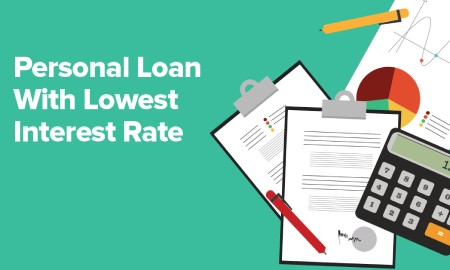August 19 2022
What is the Minimum Wage in the Philippines?

Best online loans
In the Philippines, the minimum wage is determined by the National Wage and Productivity Commission. The commission sets different minimum wages for different regions in the country, as well as for specific industries. In this blog post, we will discuss how much the minimum wage is in the Philippines, as well as some of the recent changes that have been made to it.
The current minimum wage in the Philippines is P500 per day. This means that a full-time worker who works eight hours a day should earn at least P5000 per month. However, it is important to note that this amount can vary depending on the region where you work, as well as the industry you are employed in. For example, workers in the National Capital Region (NCR) have a higher minimum wage than workers in other regions of the country.
In addition to the daily minimum wage, workers in the Philippines are also entitled to receive certain benefits, such as 13th month pay and health insurance. These benefits are mandated by law and cannot be waived by employers.
There have been some recent changes to the minimum wage in the Philippines. In January of 2022, the daily minimum wage was increased from P500 to P512. This increase was implemented to help workers keep up with the rising cost of living.
The minimum wage is an important issue in the Philippines. It is one of the main factors that workers consider when deciding whether or not to accept a job. By understanding how much the minimum wage is, as well as what benefits workers are entitled to, you can make an informed decision about whether or not a particular job is right for you.
History of minimum wage in the Philippines
The minimum wage in the Philippines is currently set at ₱512 per day for non-agricultural workers in the National Capital Region, and ₱466 per day for agricultural workers in regions outside of the NCR. These rates have been in effect since January 1, 2022, and are adjusted every year on the same date.
The minimum wage in the Philippines was first established in 1940, during the administration of President Manuel L. Quezon. At that time, the minimum wage was set at ₱4 per day for all workers. This rate remained unchanged for nearly 20 years until it was increased to ₱5 per day in 1959. Subsequent increases were implemented in 1963 (to ₱6 per day), 1970 (to ₱7), 1976 (to ₱8), and 1983 (to ₱9).
In 1989, a new Labor Code was enacted, which removed the previous minimum wage rates and replaced them with a new system of regional Minimum Wage Orders. Under this system, different regions of the country could have different minimum wage rates, based on the cost of living in each region. These rates were to be reviewed and updated every two years.
In 2006, a new law known as the "Magna Carta for Micro-, Small-, and Medium-Scale Enterprises" was enacted, which mandated that all MSMEs must pay their employees a minimum of ₱1,000 per day.
This law applied to all MSMEs regardless of their location or industry.
The current system of regional Minimum Wage Orders remains in place today.
The rates are reviewed and updated every two years, with adjustments taking effect on January 1st of each year.
What is the minimum wage in the Philippines in 2022?
The Minimum Wage in the Philippines is expected to be around 1,500 Pesos per month in 2022. The Minimum Wage in the Philippines is set by the National Wages and Productivity Commission (NWPC), which is an attached agency of the Department of Labor and Employment (DOLE).
The NWPC determines the appropriate minimum wage levels for different regions and industries taking into account socio-economic factors such as cost of living, inflation rate, and economic growth. The Regional Tripartite Wages and Productivity Boards (RTWPBs) are responsible for setting the minimum wage rates within their respective regions. The RTWPBs take into account the current minimum wage levels, as well as other factors such as the productivity of workers, cost of living, inflation rate, and economic growth.
In setting the minimum wage levels, the RTWPBs consult with representatives from labor, management, and government. After considering all these factors, the RTWPBs submit their recommendations to the NWPC for approval. Once approved by the NWPC, the new minimum wage levels are then implemented nationwide.
Current real minimum wage based on March 2022 CPI
REGIONMWR (PHP)
|
*533.00 - 570.00 |
|
|
*400.00 |
|
|
*372.00 - 400.00 |
|
|
*375.00 - 400.00 |
|
|
*344.00 - 460.00 |
|
|
*350.00 - 470.00 |
|
|
*329.00 - 355.00 |
|
|
*365.00 |
|
|
*410.00 - 450.00 |
|
|
*382.00 - 435.00 |
|
|
*345.00 - 375.00 |
|
|
*338.00 - 351.00 |
|
|
*378.00 - 405.00 |
|
|
*438.00 - 443.00 |
|
|
*347.00 - 368.00 |
|
|
*350.00 |
|
|
*306.00 - 341.00 |
Loans for people who live on minimum wage
For many people who live on minimum wage, taking out a loan can seem like an impossible task. Banks and other lending institutions typically require borrowers to have a certain level of income to qualify for a loan. However, there are a growing number of lenders who are willing to work with people who live on minimum wage. These lenders understand that people in this situation often have a limited ability to repay a loan, but they may be willing to offer smaller loans with more flexible repayment terms.
As a result, people who live on minimum wage may be able to find loans that can help them cover unexpected expenses or make needed repairs. While these loans may come with higher interest rates, they can provide a much-needed financial lifeline for people who would otherwise be unable to borrow money.
Related articles






